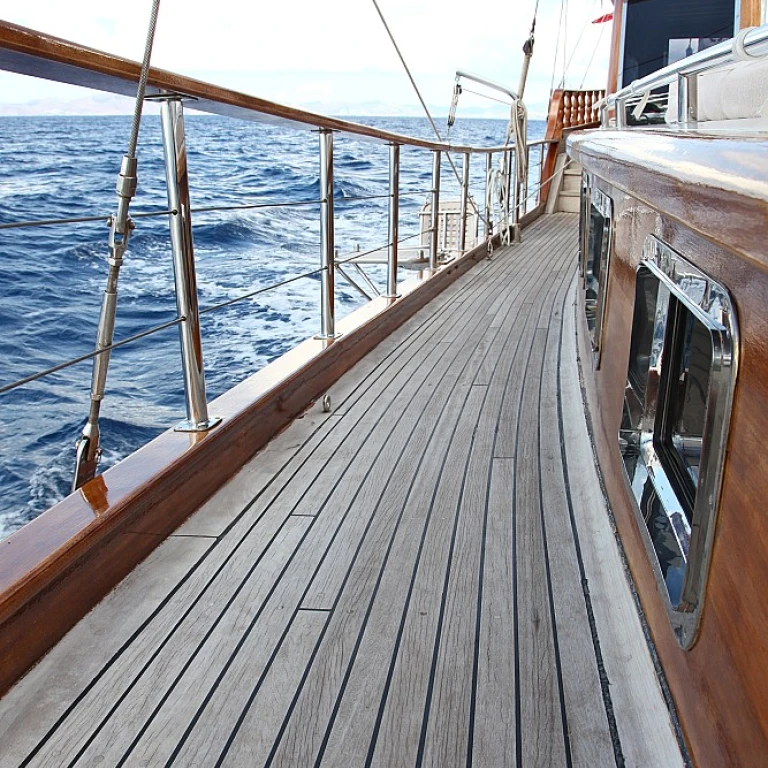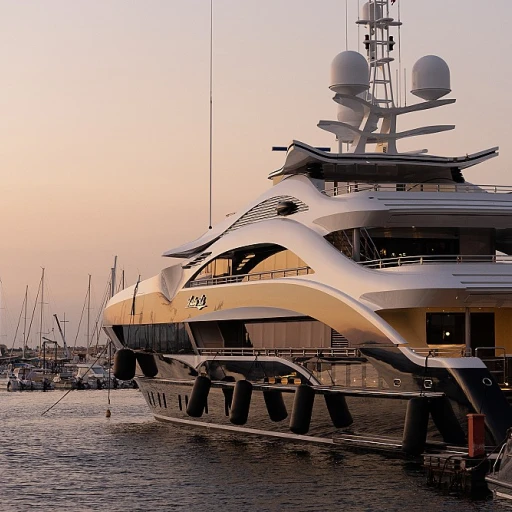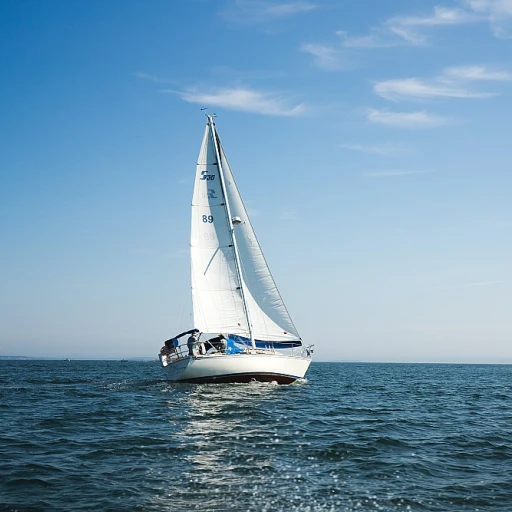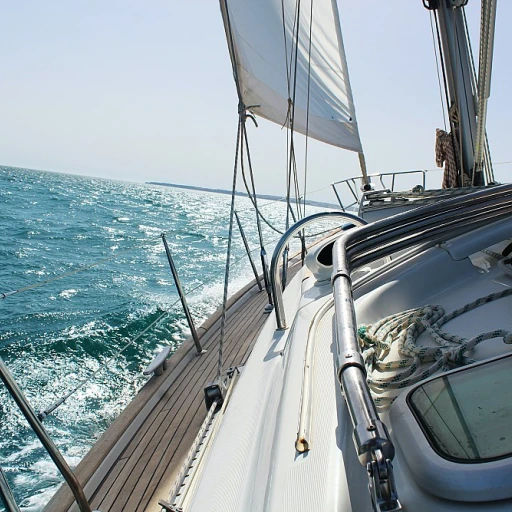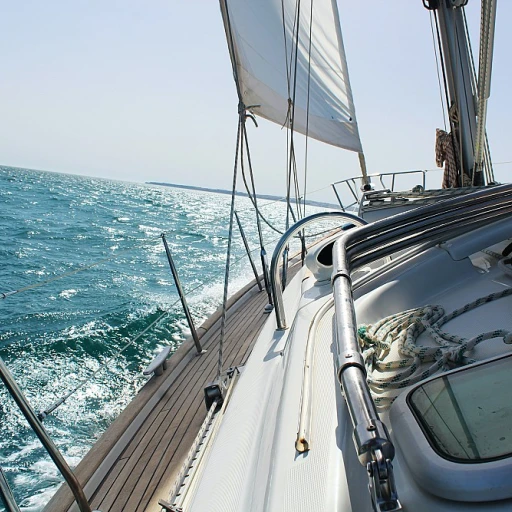
Understanding the Role of Turnbuckles in Yacht Rigging
The Importance of Turnbuckles in Yacht Rigging
Understanding the intricate web of standing rigging aboard your yacht is essential for any enthusiast. One of the pivotal components in this system are the turnbuckles. These devices ensure that your shrouds and stays are kept at the optimal tension, which is crucial for maintaining the structural integrity of the entire mast setup. By managing the tension, turnbuckles aid in distributing loads evenly across the rigging, preventing wire deformation and minimizing wear over time. The effectiveness of turnbuckles can directly impact the safety and performance of your vessel. Thus, it’s important to recognize when it’s time to replace turnbuckles and not delay the necessary rigging replacement. Remember that hardware, such as clevis pins and stainless-steel fittings, are integral to the stability of the wire rope used throughout the standing rigging. Furthermore, selecting the right type of turnbuckles for your boat is crucial. Whether you opt for open body turn buckles or body turnbuckles with cotter pins, the choices you make will determine the ease of adjustments and long-term durability. Sta lok fittings for instance, offer robust options that can last countless years when maintained properly. This seasonal yacht care guide offers valuable tips on maintaining your yacht's overall health, ensuring each component, including the standing rigging, remains in top condition over the years. Taking a proactive approach not only extends the lifespan of your yacht but also ensures your maritime adventures remain worry-free and enjoyable.Signs It's Time to Replace Your Turnbuckles
Recognizing the Wear and Tear of Turnbuckles
Knowing when to replace the turnbuckles in your yacht's standing rigging is crucial for maintaining safety and performance. These fittings, which connect the tensioned elements of the rig such as the shrouds and stays to the deck, endure significant stress over time. Therefore, identifying the signs that signify replacement needs is paramount. Here's what to watch for:
- Corrosion on Metal Components: The wire rope, stainless steel body turnbuckles, and swaged fittings may show signs of rust. Regularly inspect the surface for any discoloration or pitting that suggests corrosion, especially in areas exposed to saltwater.
- Difficulty in Adjustment: If adjusting the turnbuckle becomes increasingly difficult, this might be due to seized threads. Turnbuckles should smoothly adjust without excessive force.
- Visible Damage: Look for bent or deformed components. Damage like this generally occurs after impact or excessive strain, which could compromise the rigging's integrity.
- Loose or Missing Cotter and Clevis Pins: Missing or damaged pins can lead to serious failures in the rigging system. Ensure all pins and toggles are secure.
- Age of the Rigging: Even if no visible damage is apparent, regularly assess the age of your rigging. After several years, materials naturally deteriorate, and replacing turnbuckles may be necessary for preventative maintenance.
Understanding these signs helps in making informed decisions about when it's time to undertake rigging replacement. By staying vigilant to these issues, you can preempt potential hazards, ensuring your boat remains sea-worthy.
Choosing the Right Turnbuckles for Your Yacht
Key Factors in Selecting the Right Turnbuckles for Your Yacht
Choosing the appropriate turnbuckles is imperative for effective rigging replacement on your yacht. They are critical elements in maintaining the tension of your standing rigging, linking wire rope to the mast, and ensuring the stability of the entire rig. Here’s what you should consider:- Material Quality: Turnbuckles are available in various materials, but stainless steel remains the preferred choice due to its excellent resistance to corrosion. This is particularly vital given the marine environment your boat will operate in.
- Type of Turnbuckle: You’ll need to decide between open body and closed body types. Open body turnbuckles, with their exposed threads, allow for easy inspection and cleaning, which can be advantageous for ensuring longevity. Closed body turnbuckles, however, offer a sleeker appearance and can minimize snagging.
- Fittings and Connections: Pay attention to the ends of your turnbuckles. Common fittings include toggle ends, clevis pins, and sta lok fittings. These attachments ensure a secure and flexible connection to your yacht's shrouds stays and other lower fittings.
- Compatibility with Existing Rigging: The choice of turnbuckles should align with the current configuration of your wire rigging. A mismatch can result in inefficient performance or even the need for replacing the entire rig.
- Manufacturer Specifications: Consult with manufacturer guidelines, as they often recommend specific types for various rigging systems on different yacht models. This decision can impact the lifespan and performance of your standing rigging.
Step-by-Step Guide to Replacing Turnbuckles
Gathering Necessary Tools and Materials
Before you dive into replacing the turnbuckles, ensure you have all the necessary tools and materials at hand. This includes new turnbuckles (choosing between stainless steel or sta-lok), wire rope, cotter and clevis pins, as well as open or closed body turnbuckles if needed. It’s essential to maintain focus and organization during this process to prevent any mishaps or delays.
Prepping the Boat and Rigging
Start by preparing your yacht's rigging system. Prior to any removal, check your mast, rigging, and shrouds for any additional wear. Remember, it's wise to mark the location of each turnbuckle with a marker to ensure accurate replacement later.
Removing the Old Turnbuckles
Begin by using appropriate tools to carefully remove the cotter pins and clevis pins. Once removed, you can liberate the old turnbuckles. Handle each component with care to prevent any unnecessary damage to the wire rigging or fittings.
Installing the New Turnbuckles
After removal, you're ready to install the new turnbuckles. Connect the swaged fittings to your wire, ensuring everything is tightly secured and correctly aligned. Use body turnbuckles, either open or closed body, depending on your yacht's requirements. Make sure they are appropriately threaded and adjusted to maintain optimal tension across rigging stays and shrouds.
Securing the System
Once all components are in place, reinsert new cotter pins to lock the turnbuckles. Tug each fitting gently to test the system. This step is crucial to verify that everything is effectively attached and secure, avoiding potential failure during sailing.
Final Checks and Adjustments
Finally, conduct a thorough inspection of the replaced rigging. Verify that the adjustments made provide the necessary support to the lower mast and other structural elements. Keep a log of when the rigging was replaced for future reference. Regular checks over the years will aid in maintaining good standing rigging health.
Common Mistakes to Avoid During Replacement
Missteps to Watch Out For When Replacing Turnbuckles
Replacing standing rigging components like turnbuckles is a meticulous task that demands caution and precision. To ensure the safety and efficiency of your rigging, it’s crucial to avoid some common mistakes that can lead to potential failures and costly repairs.
- Neglecting to Inspect Entire Rigging System: Before replacing turnbuckles, conduct a thorough inspection of all rigging parts. Pay special attention to wire rope connections and swaged fittings. This helps identify if other components like shrouds or stays also require attention.
- Using Incompatible Components: Ensure that your newly selected turnbuckle types (open body or closed body) are compatible with your existing rigging system and material. Stainless steel turnbuckles, for example, should match with similar material fittings to prevent corrosion issues.
- Improperly Securing Clevis Pins: Clevis pins and cotter pins play a critical role in securing the rigging. Always double-check their installation to avoid potential disconnections in high-stress situations.
- Overlooking the Need for Tension Adjustment: After fitting new turnbuckles, ensure proper tension in the wire rigging. Inadequate tension can lead to mast instability, while excessive tension could damage the fittings and rig.
- Forgetting to Replace Toggles: Check for worn or corroded toggles that may need replacement alongside turnbuckles. Toggles allow for movement and alignment adjustments, ensuring even stress distribution.
- Skipping Regular Maintenance Checks: Post-replacement maintenance is key. Regularly inspect and grease the threads of body turnbuckles, especially if you sail in corrosive environments, to prolong their lifespan.
By keeping these potential pitfalls in mind during your rigging replacement procedure, you can ensure your yacht's standing rigging remains in optimal condition, contributing to safer and more enjoyable voyages for years to come.
Maintaining Your New Turnbuckles for Longevity
Keep Your Turnbuckles in Top Shape
Maintaining the efficiency and longevity of your newly replaced standing rigging turnbuckles is crucial to ensuring your yacht's rigging system performs at its best. Proper maintenance not only prolongs the life span of your hardware but also enhances safety on board.- Regular Inspections: After replacing your turnbuckles and standing rigging, it's important to include regular inspections in your maintenance routine. Check for any signs of corrosion, especially on stainless steel components, and wear on the fittings and swaged fittings. While there’s no definitive rule on how often inspections should occur, doing it frequently will help you catch any issues early on.
- Grease and Lubrication: Applying a good quality lubricant to the threads of your turnbuckles, whether open body or closed body type, ensures smooth operation and prevents seizing. Make sure you carefully apply the lubricant, avoiding areas where you may need to manually adjust shrouds and stays efficiently when necessary.
- Protect Against the Elements: Your yacht's rigging is continuously exposed to harsh marine conditions. Using rigging tape on cotter pins and clevis pins, as well as other exposure-prone parts, provides additional protection from the salty sea air.
- Avoid Over-Tightening: When adjusting your wire rigging and body turnbuckles, use caution to avoid over-tightening as it can strain both the wire rope and mast. Proper tensioning is critical; refer back to your measurements before you replaced every rigging component to gauge whether adjustments are necessary.
- Monitor Load and Stress: Over the years, standing rigging such as lower shrouds and the rig can experience unforeseen stresses. It’s wise to periodically check for changes in tension using a rigging tension gauge. Pay close attention to the toggles and pins as these are common stress points.

